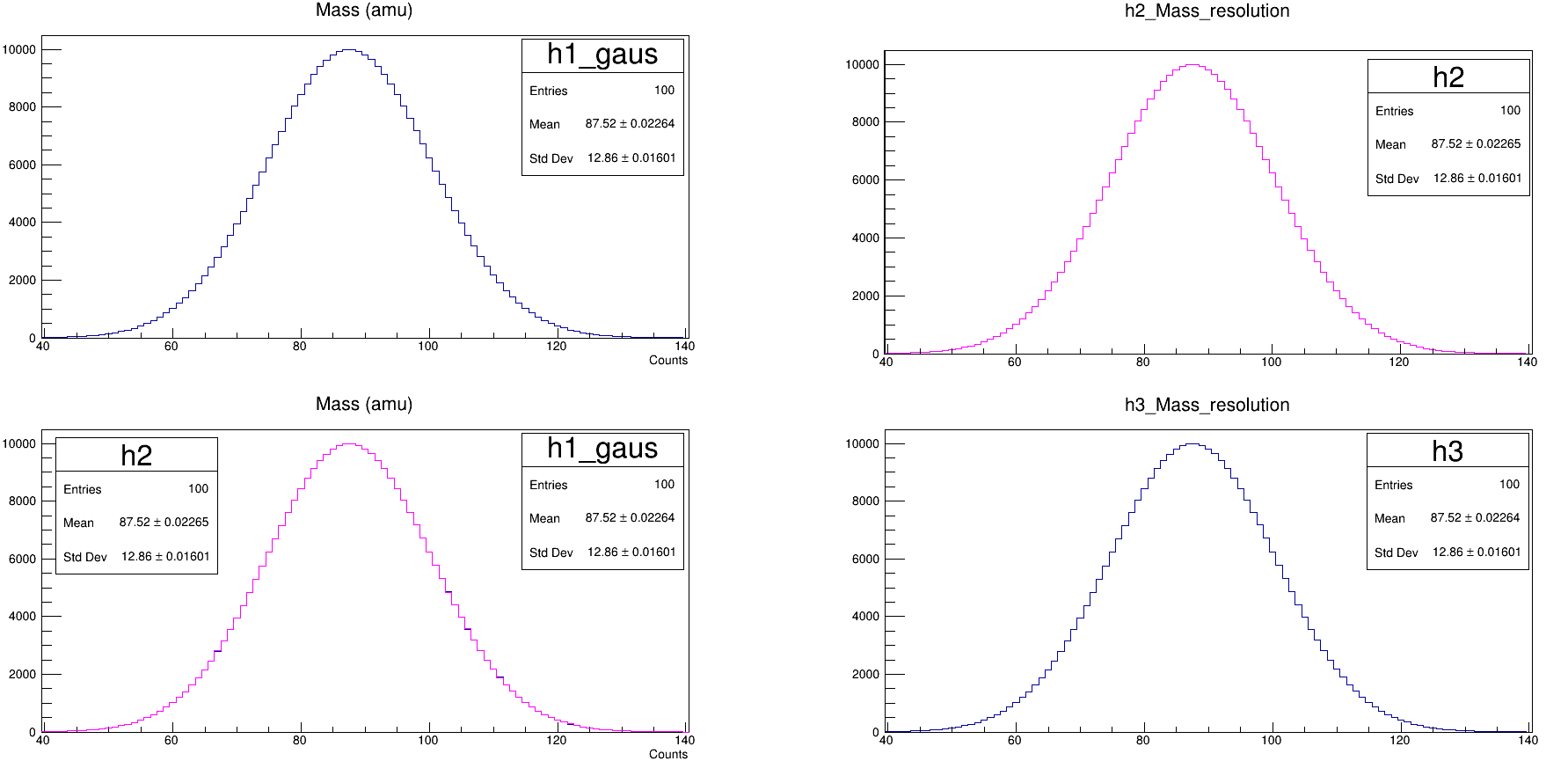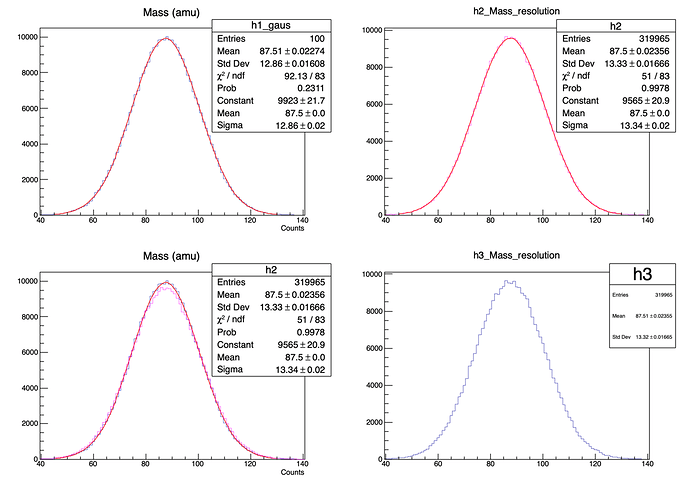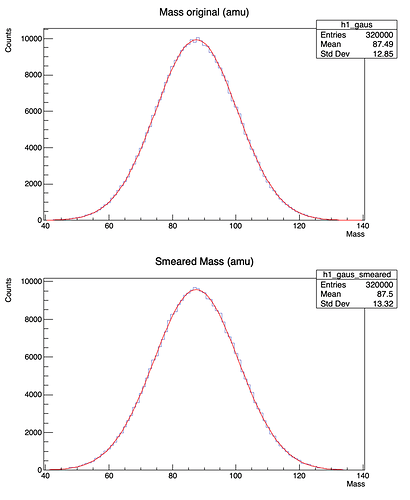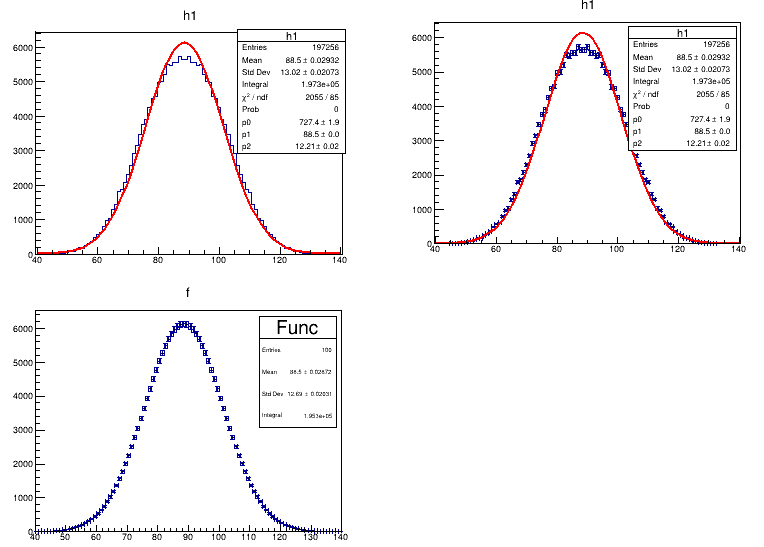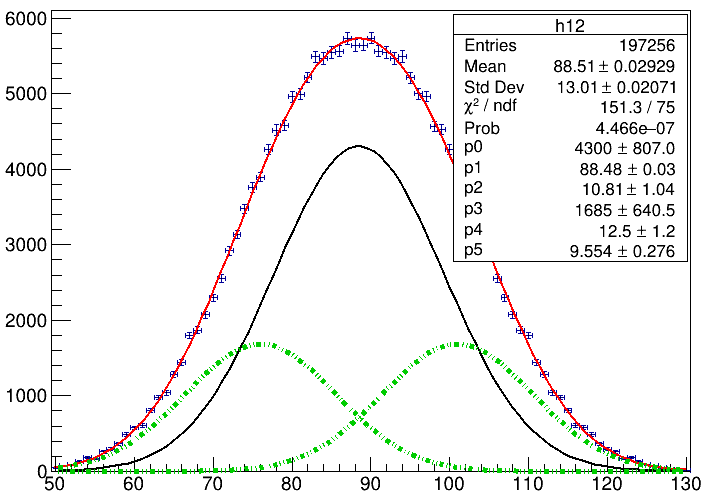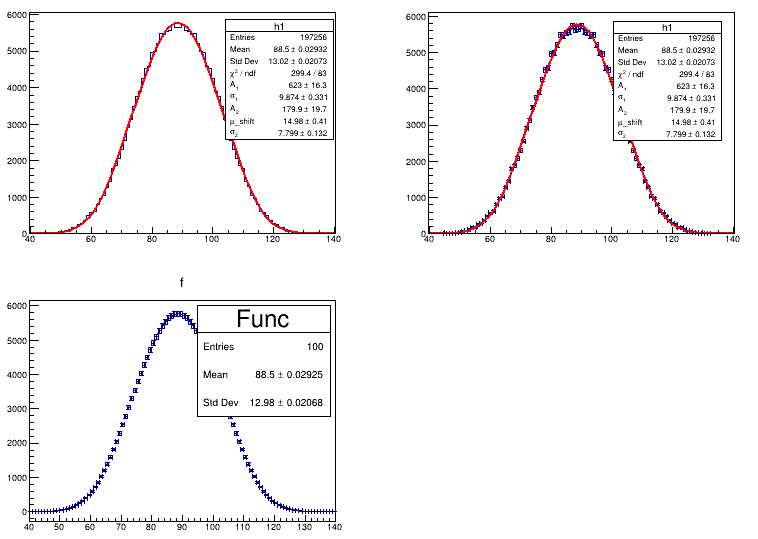You can obtain the values of the initial distribution like the sigma, µ and amplitude, but you cannot get the initial data before the smearing.
Below you find a code to find the initial values.
The codes use the convolution of the initial distribution with the gaussian for the resolution, and I use the convolution function created with TF1Convolution to fit the smeared data.
There is another example here
void macro()
{
auto h1 = new TH1D("h1_gaus","Mass (amu);Counts",101.0,39.5,140.5);
auto h1_smeared = new TH1D("h1_gaus_smeared","Mass (amu);Counts",101.0,39.5,140.5);
double amu=0;
for(long int i=0;i<320000;i++)
{
//generate the original data µ=87.5, sigma 12.86
amu=gRandom->Gaus(87.52,12.86);
//fill the histo with the original distribution
h1->Fill( amu );
//fill the histo with the smeared distribution
h1_smeared->Fill( amu + gRandom->Gaus(0,3.5));
}
//define a TF1Convolution, note that the range is slightly larger than the original one
// the 2 functions are both gaussians, the first is your original distribution while the latter is
// for the resolution
TF1Convolution *f_conv = new TF1Convolution("gaus", "gaus", 30.,150., true);
f_conv->SetRange(30.,150.);
f_conv->SetNofPointsFFT(1000);
//I create a TF1 from the TF1Convolution
TF1 *f = new TF1("f", *f_conv, 40., 140., f_conv->GetNpar());
//I create a gaussian for the unsmeared distribution
TF1 *f_gaus = new TF1("f_gaus_original","gaus", 40., 140.);
// I set reasonable parameters for the convoluted function
f->SetParameters(1e4,90.,13., 0.,3.5);
// I fix the mean and the sigma of the gaussian accounting for the resolution
f->FixParameter(3,0.);
f->FixParameter(4,3.5);
TCanvas *c = new TCanvas("c","c",800,1000);
c->Divide(1,2);
//I draw the original histogram in the top part
c->cd(1);
h1->Draw();
//I draw the smeared histogram in the bottom part
c->cd(2);
h1_smeared->Draw();
// I fit the smeared histogram with the convolution function
h1_smeared->Fit(f);
c->cd(1);
//I use the parameters of the convoluted function found with the fit to initialize the value of the original gaussina
f_gaus->SetParameters(f->GetParameters());
double convoluted_gauss_area= 3.5*TMath::Sqrt(2*TMath::Pi());
//I need to rescale the amplitude parameter with the area of the convolution function
//This is due the math property of convolution
f_gaus->SetParameter(0,convoluted_gauss_area*f_gaus->GetParameter(0));
// Here I just draw the gaussian on the original histogram, I not use any fit
f_gaus->Draw("same");
}
Here you found the results of the fit obtained with the convolution function
As you can see p1 (µ) and p2(sigma) are very close to the one I used to fill the initial histogram (µ=87.52, sigma= 12.86). Note also as p3 and p4 are fixed.
FCN=123.174 FROM MIGRAD STATUS=CONVERGED 123 CALLS 124 TOTAL
EDM=2.30469e-09 STRATEGY= 1 ERROR MATRIX ACCURATE
EXT PARAMETER STEP FIRST
NO. NAME VALUE ERROR SIZE DERIVATIVE
1 p0 1.13228e+03 2.51851e+00 1.08943e-02 6.24005e-06
2 p1 8.75508e+01 2.36011e-02 1.28403e-04 -2.38911e-03
3 p2 1.28588e+01 1.73945e-02 7.52388e-05 2.55143e-03
4 p3 0.00000e+00 fixed
5 p4 3.50000e+00 fixed
Here the plot obtained.

